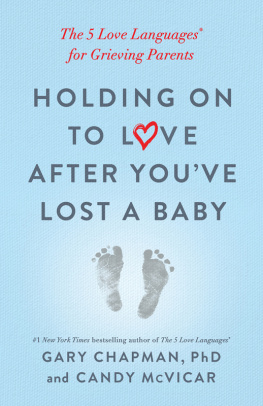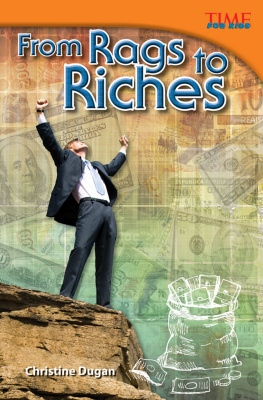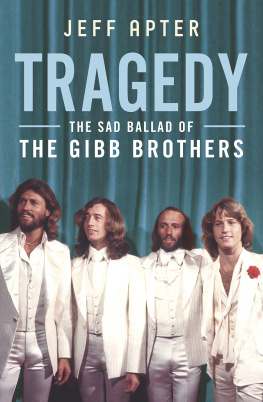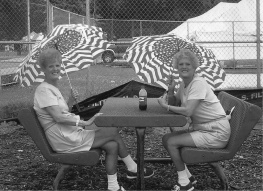THE DOLLY SISTERS
ICONS OF THE JAZZ AGE
Gary Chapman
Edditt Publishing
www.eddittpublishing.com

Praise for The Dolly Sisters
(published in hardback as The Delectable Dollies)
They seduced tycoons, Kings and even the Prince of Wales with their exotic dance routines. But the Dolly Sisters quest for fame and fortune had devastating consequences. Daily Mail
Forget Kylie Minogue for pure unadulterated glamour because two sisters held that crown before she shook her derriere at audiences around the World. Sunday Express
The Queens of Twenties and Thirties cafe society, with more diamante than you could shake a feather at. Tatler
A potent cocktail given due weight in Chapmans effervescent biography. The Good Book Guide
A well-researched, informative biography. Gay Times
A labour of love. Chapman is scrupulous in not presenting speculation as fact By not probing too deeply, (he) is at least consonant with the period, for the Dollies inhabited a curiously innocent, pre-freudian world. Sunday Telegraph
A thoroughly researched story of the beautiful twenties twins, as remarkable for their social as their theatrical life. The Stage
Jenny and Rosie outshone everyone in exuberance and high living. If celebrity is a devalued currency these days, then they were the gold standard. But their glittering lives also reflect the potentially tragic nature of the pursuit of fame and fortune. Daily Mail
This book is dedicated to Andy Orr with thanks
First published in 2006 by Sutton Publishing Ltd
This paperback edition published in 2013 by Edditt Publishing
Copyright Gary Chapman, Edditt Publishing, 2013
All rights reserved. No part of this publication may be reproduced, stored in a retrieval system, or transmitted in any form or by any means, electronic, mechanical, photocopying, recording or otherwise, without prior written permission of the publisher/author.
ISBN: 978-1-909230-03-3
Other formats available:
ebook (epub) 978-1-909230-04-0
ebook (mobi) 978-1-909230-05-7

Visit the website dedicated to the Dolly Sisters:
http://dollysisters.wordpress.co.uk
and:
www.jazzageclub.com
Printed in the UK by Print on Demand Worldwide
9 Culley Court, Orton Southgate, Peterborough, PE2 6XD, UK
AUTHORS NOTE
The Christian names of the Dolly Sisters were used in several different forms throughout their career. For ease and convenience I have chosen to name them Rosie and Jenny throughout. Likewise, Jennys daughters have been called Manzi and Klari.
The Dolly Sisters were also collectively referred to as the Dollys, the Dollys and the Dollies the latter being used especially when describing their famous musical number The Dollies and the Collies and in the title of their only movie together, The Million Dollar Dollies. I have chosen to use the Dollies.
The many press reports of the Dollies list money values in dollars, pounds sterling and French francs. To avoid the confusion of using multiple currencies, I have decided to apply dollars throughout.
For a rough estimate of what these amounts would be worth in the early twenty-first century, visit the inflation calculator at www.westegg.com/inflation.
For a quick conversion, note that $1 in the 1920s would be worth over $10 today. Exchange rates fluctuated in the 1920s, but the following formula may be used as a rough guide to equivalents during the period: $5 = 1; $1 = FF25; 1 = FF125.
To get some understanding of the sheer size of the sums of money involved, it is worth noting that Rosies divorce settlement in 1932 was in the region of $2 million, which would be worth over 20 million today. Meanwhile, Jennys collection of jewels was estimated to be over $1 million, which would be worth over $10 million today.
It must be admitted that the chief fascination of the twin Dollies lies not so much in the grace of their dancing, nor in the charm of their personalities, nor in the naivet of this manner, nor yet the quaintness of their accents sufficient as are all of these but rather in the amazing duplicity of Nature.
(Margaret Burr, Theatre Magazine, May 1916)
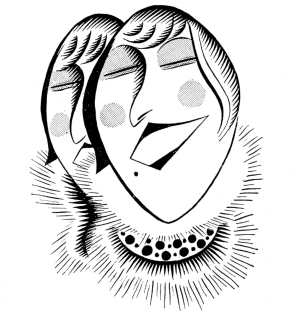
Variously described as the delectable Dollies, the heavenly twins, the tootsie-wootsies of the world, les grandes amoureuses or the oomph girls of their day, the Dolly Sisters were legends in their own time on both sides of the Atlantic. They danced their way to fame and fortune on Broadway in the early twentieth century before conquering London and Paris in the twenties, and were certainly the most famous sister act to appear on the stage, paving the way for the many later duos and trios that proliferated in their wake. Even the Gabor sisters followed in the Dollies dainty footsteps.
Born in Hungary in 1892, the sisters moved to America at the age of twelve and began making their living as entertainers in big shows, vaudeville and the movies, including the aptly titled The Million Dollar Dollies. They were close friends with the elite of Broadway and Hollywood and became the essential prerequisite of any celebrity social gathering. Success on Broadway made them the toast of the town and personalities in their own right, but they were not accepted by American society. And yet, by the 1940s, the society gossip columnist Cholly Knickerbocker would affirm that they had been responsible for enabling American society to accept theatrical types.
It was a different story in Europe, where they believed they were the first stage performers to become accepted socially. Their beauty and effervescent personalities, not to mention their novelty value as identical twins, had initially been their principal assets, but those who got to know them soon realised what genuinely good company they were. And yet, despite their popularity, there were some who felt that their excessive display of jewellery was ostentatious, their compulsive gambling inappropriate and their behaviour vulgar and American to boot. There were also murmurings about how exactly they had acquired their fortunes.
Their social success was matched by their professional achievement on the Parisian stage as they starred in a series of extravagant revues, giving Josephine Baker and Mistinguett a run for their money. Earning incredible salaries and the attention of wealthy admirers, the Dollies invested in property and vast collections of jewellery. Behung with baubles like a couple of Christmas trees, they became recognised as the most extravagant gamblers in Europe, as they followed the social seasons of Saint-Moritz in January, Cannes in February and March, Paris in June for the horse racing, Deauville in August and Biarritz in September.
What was it that made the Dolly Sisters so popular and living legends? What was their magic? For a start they were unusually beautiful. Their unique look was well defined early in their career. They did not conform to the accepted notion of beauty of the time. They were small and dark with striking almond-shaped eyes and an oriental grace that made them exotic, a feature that they blatantly accentuated with the careful use of make-up, hair styles and costumes. As a result of their look and their thoroughly modern behaviour, they may well have preceded and even influenced the concept of the flapper, and they most definitely had it before Elinor Glyn coined the phrase.




